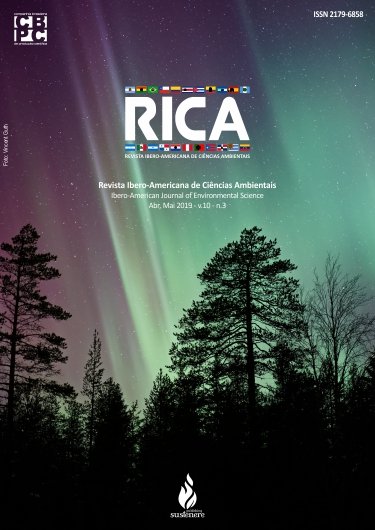Quality of a oxisol under conventional tillage and no-tillage system in the savannah of the west of Bahia, Brazil
DOI:
https://doi.org/10.6008/CBPC2179-6858.2019.003.0024Keywords:
Sustainability, Soil and Water Conservation, Water Availability, Soil Management, SavannahAbstract
The objective of this work was to evaluate the physical and hydrological parameters of a Oxisol with a sandy loam texture, cultivated with maize under conventional tillage (CT) and no-tillage system (NTS) in the Savannah of the western of Bahia, Brazil. The study was conducted in a experimental area, located in the municipality of Luís Eduardo Magalhães, Bahia, Brazil. The treatments were, T1: Corn (C) under Conventional tillage (CT); T2: C under No-tillage System (NTS) in consortium with Brachiaria (B); T3: C under NTS in consortium with B in succession to Soybean (S), Millet (Mt) and Cotton (Ctn); and T4: C under NTS in consortium with Crotalaria (Crt), having as reference one area of Natural Savannah (NS) of Phytophysiognomy of Campo Sujo. Soil samples were collected in the layers 0.00 to 0.05 m; 0.05 to 0.10 m and 0.10 to 0.20 m and were used to determine, total porosity (Tp); macroporosity (Ma); microporosity (Mi); bulk density (Bd) and water availability (WA) through the water retention curve (WRC); the granulometric fractions and the total organic carbon (TOC). The difference of the values of the attributes measured in the treatments was first used to verify the increase (+) or reduction (-) of the attribute in relation to the NC (Δref, %). Then, the treatments were submitted to analysis of variance and the means were compared by the Duncan test at the 5% significance level, as well as the Pearson correlation analysis to evaluate the relationships between the attributes. It was verified that the NTS promoted the soil quality by increasing of total organic carbon, the degree of flocculation, the available water content and microporosity, besides having reduced the clay dispersed in water. However, the NTS presented higher bulk density and resistance to penetration, lower macroporosity and total porosity, without damage to the growth and development of plants. Thus, it is concluded that the NTS is capable of promoting structuring, quality and the functions of the soil, as a natural resource essential to life.
Downloads
Downloads
Published
Issue
Section
License
The CBPC - Companhia Brasileira de Produção Científica (Brazil CNPJ: 11.221.422/0001-03) the material rights of the published works. The rights relate to the publication of the work anywhere in the world, including rights to renewals, expansions and dissemination of the contribution, as well as other subsidiary rights. All electronically published works may subsequently be published in printed collections under the coordination of this company and / or its partners. The authors preserve the copyright, but are not allowed to publish the contribution in another medium, printed or digital, in Portuguese or in translation.









